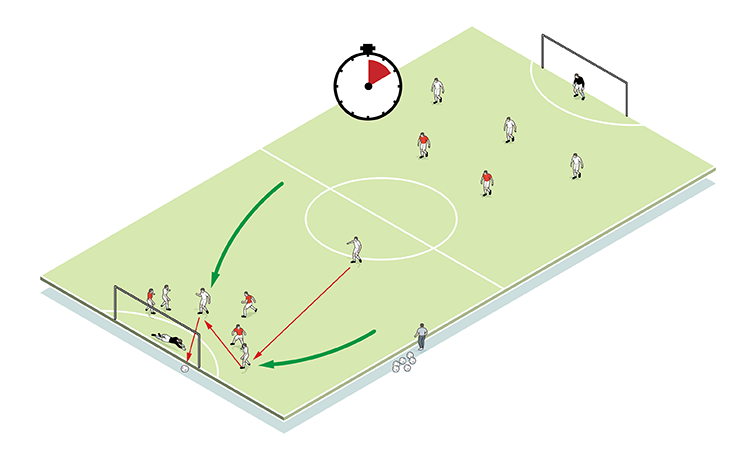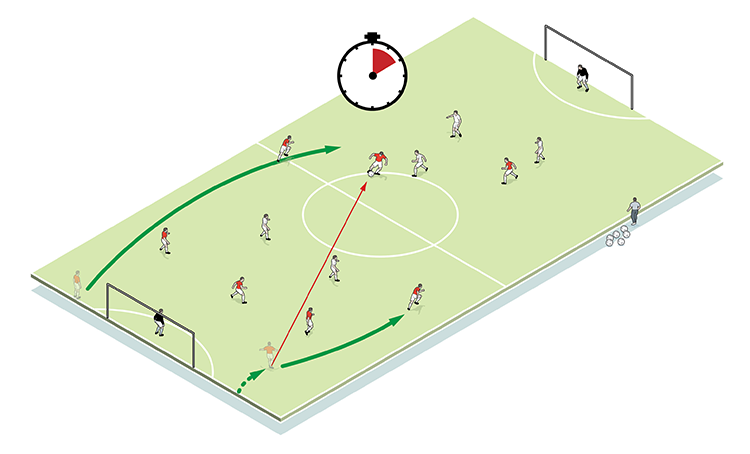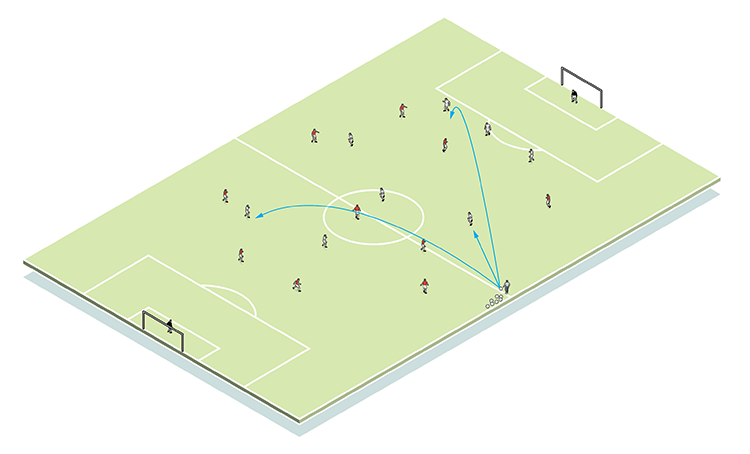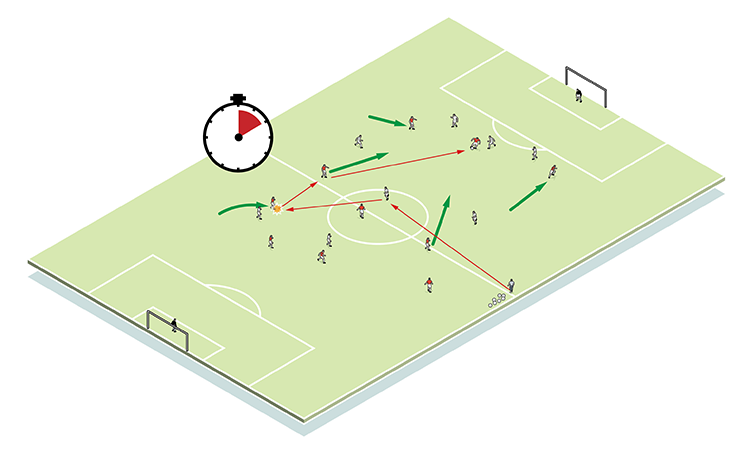




OUR BEST EVER OFFER - SAVE £100/$100
JOIN THE WORLD'S LEADING PROFESSIONAL DEVELOPMENT PROGRAMME
- 12 months membership of Elite Soccer
- Print copy of Elite Player & Coach Development
- Print copy of The Training Ground
You are viewing 1 of your 1 free articles
Transition, rotating and attacking
This session is about counter-attacking, transitioning, and players rotating in their positions.
| Area | Up to a full pitch |
| Equipment | Balls, cones, goals |
| No. of Players | Up to 11v9 |
| Session Time |
Transition and rotation drill 3 x 12mins, 11v9 3 x 12mins |
This session is about counter-attacking, transitioning, and players rotating in their positions.
It relies on good link-up play and positive attacking, combining fast-paced and measured attacks on goal.
Defenders benefit from dealing with overloads in this session, which we always find important to practise, given that there are 200 turnovers per team in each game.
What do I get the players to do?
Transition and rotation drill
We set this up as shown, using the space in between the penalty areas (1a). To begin, both attackers emerge from behind the top goal - one of them has the ball. This man lays a pass into the feet of one of two team mates in the other half. Both ‘start’ players then go to support - so four attackers move in on goal against three defenders. Attackers have 10 seconds to score a goal (1b). If after 10 seconds there is no goal, or possession is turned over, the ball is returned to the server.
1a

1b

Straight away, the server puts a second ball into play for another 4v3 (1c), except this time attackers can take as long as they need to find the net.
1c

All players reset after the second attack, which begins from the other end of the playing area (2).
2

What are the key things to look out for?
Defenders must act exactly as they would in a match situation – so that means organising and communicating well and protecting against offsides.
Each attacker must advance quickly and pressure defenders, whether or not he has the ball. Offensive moves must penetrate in behind the defenders, with attackers always looking to make forward runs or forward passes.
Look to see how attackers act differently for the second phase. Here, the ball is delivered into a confined space, whereas in the initial phase the attack came together gradually.
Transitioning from attacking to defending and reorganising quickly for this change is essential.
11v9 game
Now on a full pitch, we play 11v9 (reds versus whites). The ball is fed to the whites (3), who must attack the bottom goal at their own pace. Play as you would a normal game, but now, when reds turn over possession, they have 10 seconds to score a goal (4).
3

4

If they fail to score, the ball is kicked out of play and a new one served in. Ensure the ball comes from different parts of the pitch whenever it is reintroduced.
Related Files
Editor's Picks
Attacking transitions
Deep runs in the final third
Using the goalkeeper in build-up play
Intensive boxes drill with goals
Penetrating the final third
Creating and finishing
My philosophy
Pressing initiation
Compact team movement
Coaches' Testimonials

Alan Pardew

Arsène Wenger

Brendan Rodgers

Carlos Carvalhal

José Mourinho

Jürgen Klopp

Pep Guardiola

Roy Hodgson

Sir Alex Ferguson

Steven Gerrard
Related
Coaches' Testimonials

Gerald Kearney, Downtown Las Vegas Soccer Club

Paul Butler, Florida, USA

Rick Shields, Springboro, USA

Tony Green, Pierrefonds Titans, Quebec, Canada
Join the world's leading coaches and managers and discover for yourself one of the best kept secrets in coaching. No other training tool on the planet is written or read by the calibre of names you’ll find in Elite Soccer.
In a recent survey 92% of subscribers said Elite Soccer makes them more confident, 89% said it makes them a more effective coach and 91% said it makes them more inspired.
Get Monthly Inspiration
All the latest techniques and approaches
Since 2010 Elite Soccer has given subscribers exclusive insight into the training ground practices of the world’s best coaches. Published in partnership with the League Managers Association we have unparalleled access to the leading lights in the English leagues, as well as a host of international managers.
Elite Soccer exclusively features sessions written by the coaches themselves. There are no observed sessions and no sessions “in the style of”, just first-hand advice delivered direct to you from the coach.







